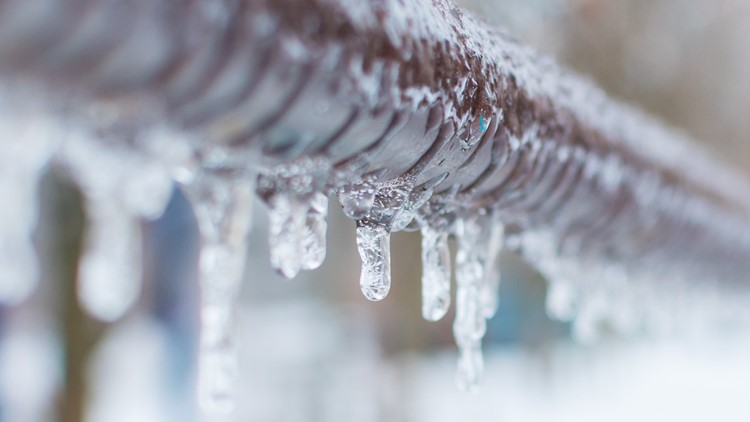Protecting Your Pipes from Freezing: Top Strategies
Protecting Your Pipes from Freezing: Top Strategies
Blog Article
Have you been hunting for related information involving How to prepare your home plumbing for winter weather?

Winter can wreak havoc on your plumbing, specifically by freezing pipelines. Here's how to stop it from taking place and what to do if it does.
Introduction
As temperatures drop, the risk of icy pipes rises, potentially leading to pricey repair work and water damages. Understanding just how to prevent icy pipelines is essential for home owners in cold environments.
Avoidance Tips
Insulating prone pipelines
Wrap pipes in insulation sleeves or utilize warmth tape to safeguard them from freezing temperature levels. Concentrate on pipes in unheated or exterior areas of the home.
Home heating strategies
Maintain indoor spaces effectively heated up, particularly areas with plumbing. Open closet doors to permit warm air to distribute around pipelines under sinks.
Just how to determine icy pipes
Search for decreased water flow from faucets, uncommon smells or sounds from pipes, and visible frost on exposed pipes.
Long-Term Solutions
Architectural modifications
Think about rerouting pipelines far from outside walls or unheated areas. Add added insulation to attic rooms, basements, and crawl spaces.
Upgrading insulation
Purchase high-grade insulation for pipelines, attics, and wall surfaces. Appropriate insulation helps keep constant temperatures and minimizes the danger of icy pipes.
Protecting Outdoor Pipes
Yard tubes and outside taps
Detach and drain pipes garden pipes before wintertime. Install frost-proof spigots or cover exterior taps with insulated caps.
Understanding Icy Pipelines
What causes pipes to ice up?
Pipelines ice up when exposed to temperatures listed below 32 ° F (0 ° C) for extended durations. As water inside the pipelines freezes, it expands, putting pressure on the pipe walls and possibly creating them to break.
Threats and problems
Icy pipes can lead to supply of water disruptions, residential or commercial property damages, and expensive fixings. Burst pipelines can flooding homes and trigger substantial structural damage.
Signs of Frozen Piping
Identifying icy pipelines early can avoid them from bursting.
What to Do If Your Pipelines Freeze
Immediate actions to take
If you believe frozen pipes, maintain faucets open up to soothe pressure as the ice thaws. Utilize a hairdryer or towels soaked in warm water to thaw pipes gradually.
Conclusion
Protecting against frozen pipelines needs aggressive procedures and fast reactions. By understanding the reasons, indicators, and preventive measures, house owners can protect their plumbing throughout winter.
5 Ways to Prevent Frozen Pipes
Drain Outdoor Faucets and Disconnect Hoses
First, close the shut-off valve that controls the flow of water in the pipe to your outdoor faucet. Then, head outside to disconnect and drain your hose and open the outdoor faucet to allow the water to completely drain out of the line. Turn off the faucet when done. Finally, head back to the shut-off valve and drain the remaining water inside the pipe into a bucket or container. Additionally, if you have a home irrigation system, you should consider hiring an expert to clear the system of water each year.
Insulate Pipes
One of the best and most cost-effective methods for preventing frozen water pipes is to wrap your pipes with insulation. This is especially important for areas in your home that aren’t exposed to heat, such as an attic. We suggest using foam sleeves, which can typically be found at your local hardware store.
Keep Heat Running at 65
Your pipes are located inside your walls, and the temperature there is much colder than the rest of the house. To prevent your pipes from freezing, The Insurance Information Institute suggests that you keep your home heated to at least 65 degrees, even when traveling. You may want to invest in smart devices that can keep an eye on the temperature in your home while you’re away.
Leave Water Dripping
Moving water — even a small trickle — can prevent ice from forming inside your pipes. When freezing temps are imminent, start a drip of water from all faucets that serve exposed pipes. Leaving a few faucets running will also help relieve pressure inside the pipes and help prevent a rupture if the water inside freezes.
Open Cupboard Doors
Warm your kitchen and bathroom pipes by opening cupboards and vanities. You should also leave your interior doors ajar to help warm air circulate evenly throughout your home.

Do you like more info about Preventing and dealing with frozen pipes? Give a comment down below. We will be glad to find out your responses about this blog entry. We hope to see you back again in the future. Sharing is nice. You won't know, you may be helping someone out. Thanks a bunch for being here. Return soon.
Request An Estimate Report this page